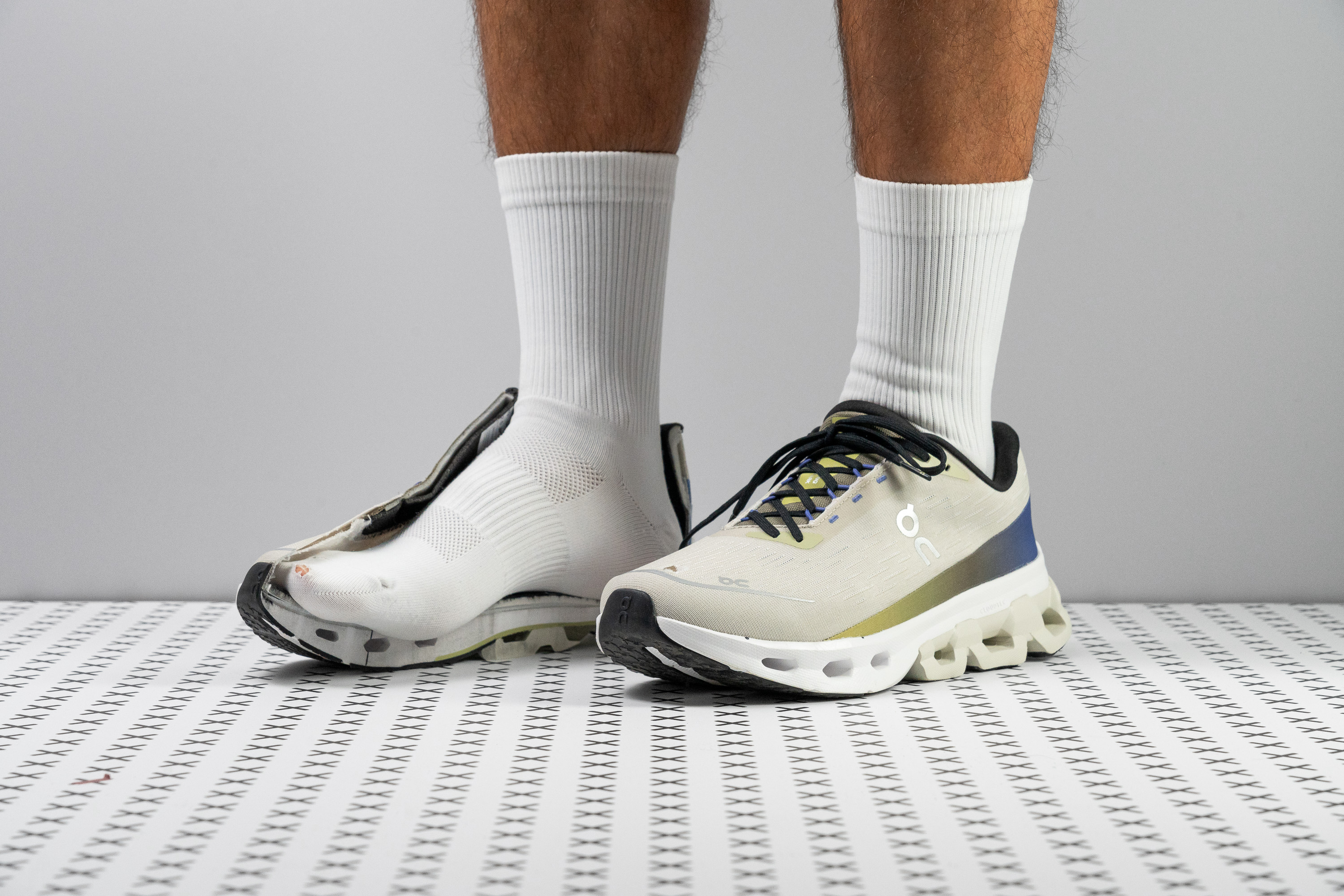Our verdict
Pros
- Highly stable
- Wide forefoot design
- Premium materials
- Lightweight
- Excellent lockdown
- Enhanced tongue comfort
- Rare women-first design
Cons
- Questionable durability
- Firm midsole
- Limited breathability
Audience verdict
Comparison
The most similar running shoes compared
+ + Add a shoe | |||||
|---|---|---|---|---|---|
| Audience score | 86 Good! | 88 Great! | 86 Good! | 89 Great! | |
| Price | £150 | £140 | £160 | £140 | |
| Pace | Daily running | Daily running | Daily running | Daily runningTempo | |
| Shock absorption | - | Moderate | - | - | |
| Energy return | - | Moderate | - | - | |
| Traction | - | High | - | - | |
| Arch support | Neutral | Neutral | Neutral | Neutral | |
| Weight lab Weight brand | 9.5 oz / 269g 9.9 oz / 282g | 9.7 oz / 275g 9.8 oz / 277g | 10.3 oz / 293g 10.6 oz / 300.5g | 9.1 oz / 259g 7.5 oz / 214g | |
| Drop lab Drop brand | 8.6 mm 8.0 mm | 8.5 mm 10.0 mm | 8.1 mm 8.5 mm | 11.2 mm 11.0 mm | |
| Strike pattern | HeelMid/forefoot | HeelMid/forefoot | HeelMid/forefoot | Heel | |
| Size | Slightly small | True to size | True to size | Slightly small | |
| Midsole softness | Firm | Balanced | Balanced | Balanced | |
| Difference in midsole softness in cold | Small | Small | Small | Small | |
| Toebox durability | Decent | Decent | Good | Bad | |
| Heel padding durability | Bad | Decent | Decent | Bad | |
| Outsole durability | Decent | Decent | Good | Good | |
| Breathability | Moderate | Moderate | Moderate | Moderate | |
| Width / fit | Medium | Medium | Medium | Medium | |
| Toebox width | Medium | Medium | Medium | Medium | |
| Stiffness | Stiff | Stiff | Stiff | Moderate | |
| Torsional rigidity | Stiff | Moderate | Stiff | Moderate | |
| Heel counter stiffness | Flexible | Stiff | Moderate | Flexible | |
| Heel lab Heel brand | 34.6 mm 34.0 mm | 33.6 mm 39.0 mm | 32.1 mm 30.5 mm | 33.8 mm 30.0 mm | |
| Forefoot lab Forefoot brand | 26.0 mm 26.0 mm | 25.1 mm 29.0 mm | 24.0 mm 22.0 mm | 22.6 mm 19.0 mm | |
| Widths available | Normal | NormalWide | Normal | NormalWide | |
| Orthotic friendly | ✓ | ✓ | ✓ | ✓ | |
| Season | All seasons | All seasons | All seasons | All seasons | |
| Removable insole | ✓ | ✓ | ✓ | ✓ | |
| Ranking | #177 Top 48% | #129 Top 35% | #193 Bottom 48% | #114 Top 31% | |
| Popularity | #340 Bottom 9% | #58 Top 16% | #323 Bottom 13% | #236 Bottom 37% |
Who should buy
After testing the Cloudspark from On in the lab, we highly recommend it for:
- Those with a wide forefoot seeking a daily trainer that balances a firm midsole with good comfort.
- Women with mild stability needs who prefer not to sacrifice weight for support.
- Heel strikers who demand top-quality materials and substantial cushioning in a daily trainer.
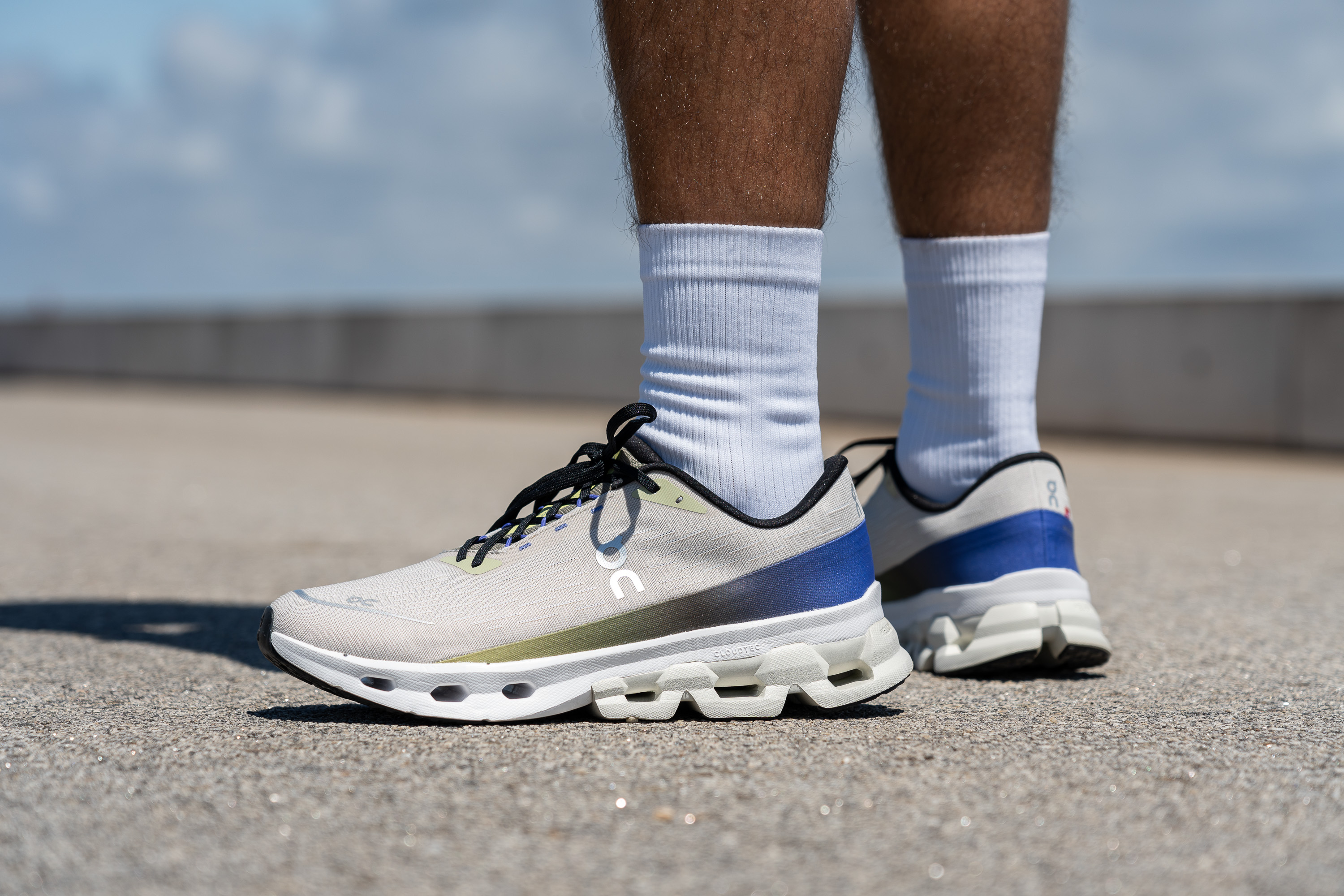
Who should NOT buy
While we liked On's approach to creating the Cloudspark with a focus on women's data, we do not recommend it as the best daily trainer for men within the brand. Inside On's lineup, we believe there are better choices like the Cloudsurfer 7 for similar budgets, and the Cloudmonster Hyper for those willing to spend a bit more.
Additionally, while many may appreciate this shoe, we believe that those of you who dislike a firm midsole will probably ultimately return it. For a women-friendly daily trainer that better balances comfort and support, we highly recommend the ASICS GT 2000 12 or the Hoka Arahi 7 instead.
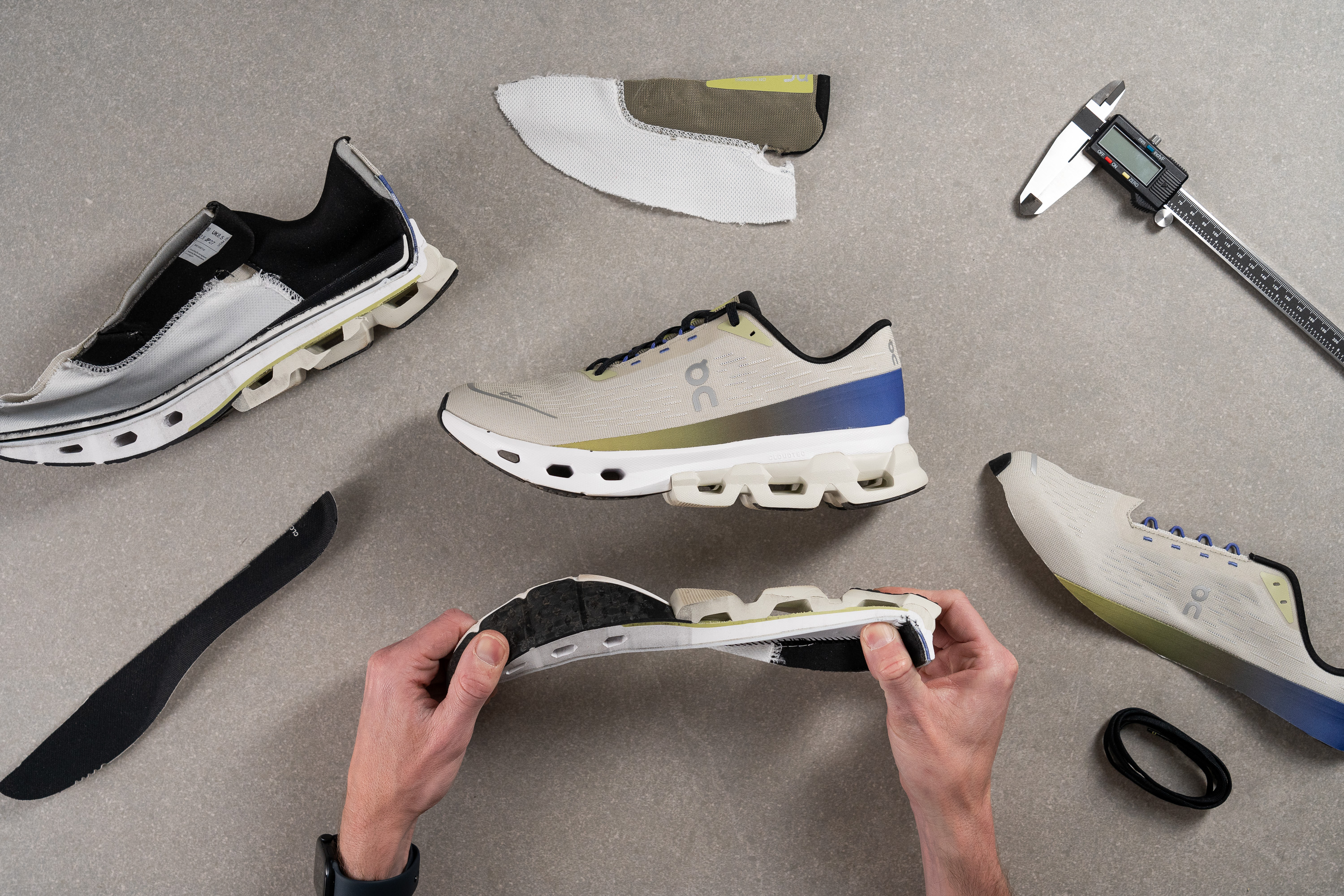
Cushioning
Heel stack
As a daily trainer primarily designed for women—which are usually heel strikers—we expected a high heel stack in the Cloudspark. Our measurements confirmed a generous 34.6 mm, providing ample cushioning for any runner, but it could be considered even maximalist for women because they generally weigh less than men.
It’s also important to note that while On sells the Cloudspark for both men and women, the brand says that this model was conceptualised with a female-centric design, focusing on their specific footstrike and biomechanics.
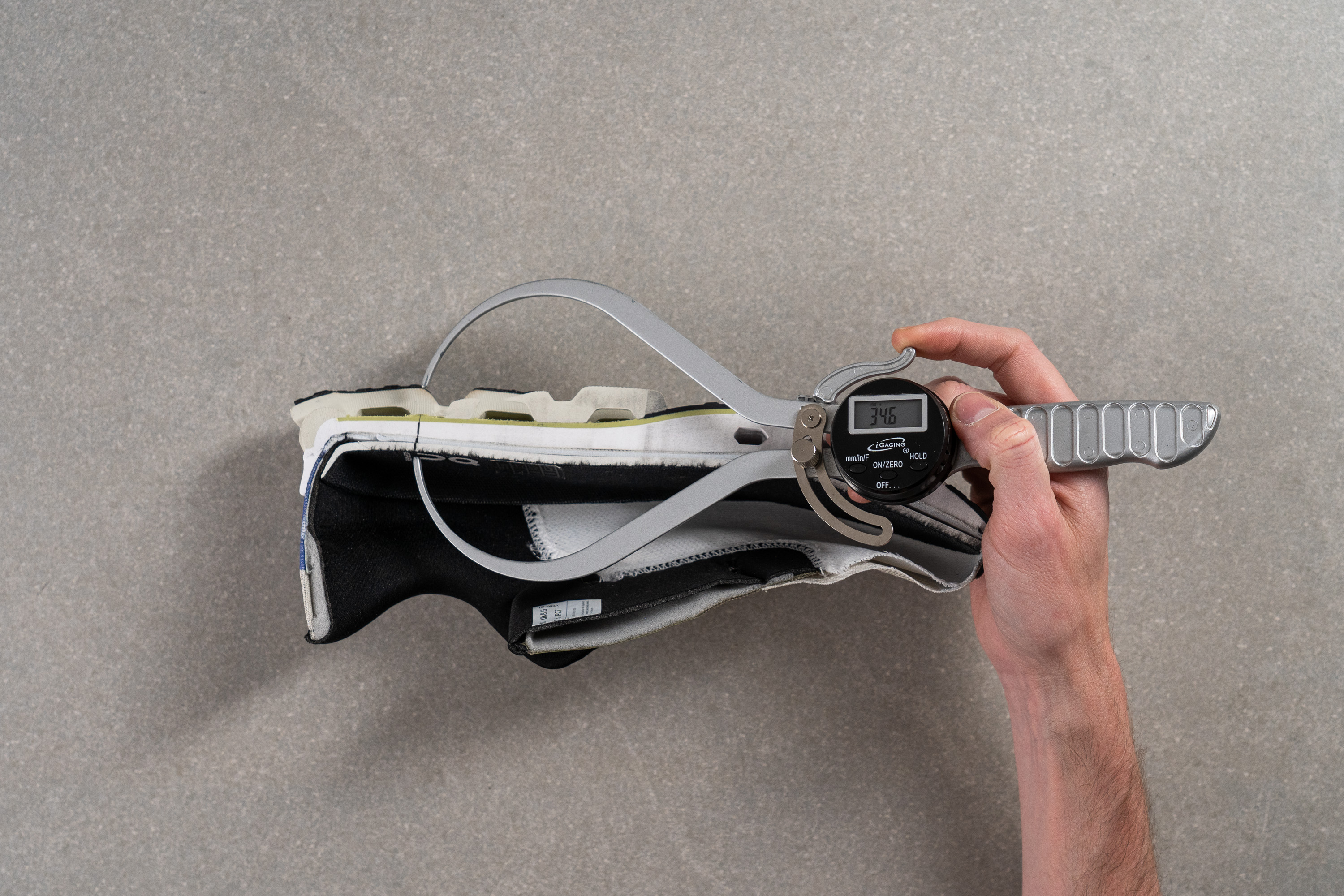
| Cloudspark | 34.6 mm |
| Average | 34.8 mm |
Forefoot stack
We also measured the forefoot, which aligns with the average height found in most running shoes designed for daily runs. This design approach seems sensible to us. We recorded its height at 26.0 mm.
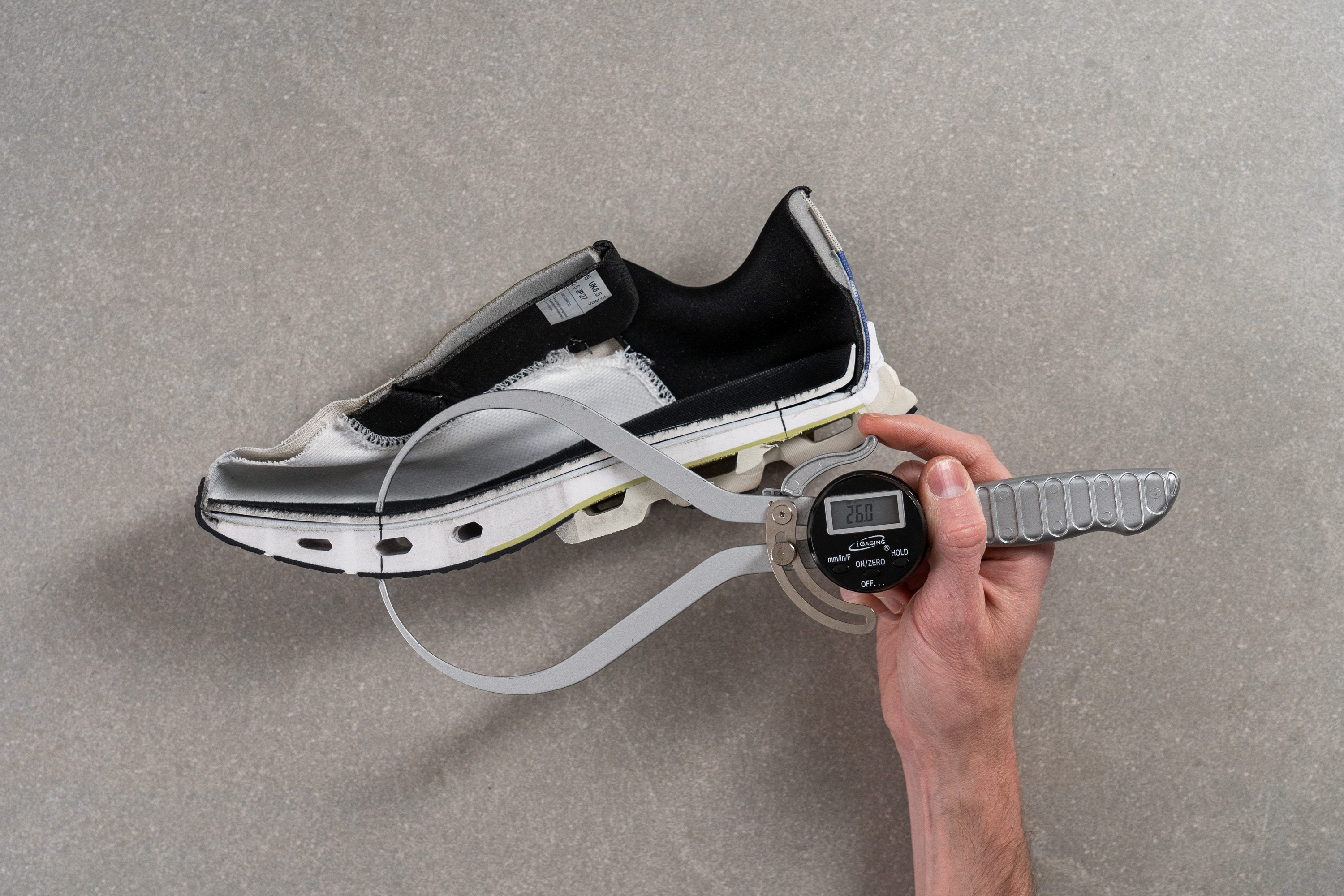
| Cloudspark | 26.0 mm |
| Average | 26.2 mm |
Drop
While On typically designs shoes with a 6-mm drop, they adapted their approach this time due to the women-driven design we mentioned earlier. And given that women often are heel strikers, it makes practical sense to introduce a bit more offset, right?
Although the brand advertises the drop at 8 millimetres, our measurements came in slightly higher at 8.6 mm. This difference is negligible and the feel is comparable, so we consider this spec confirmed.
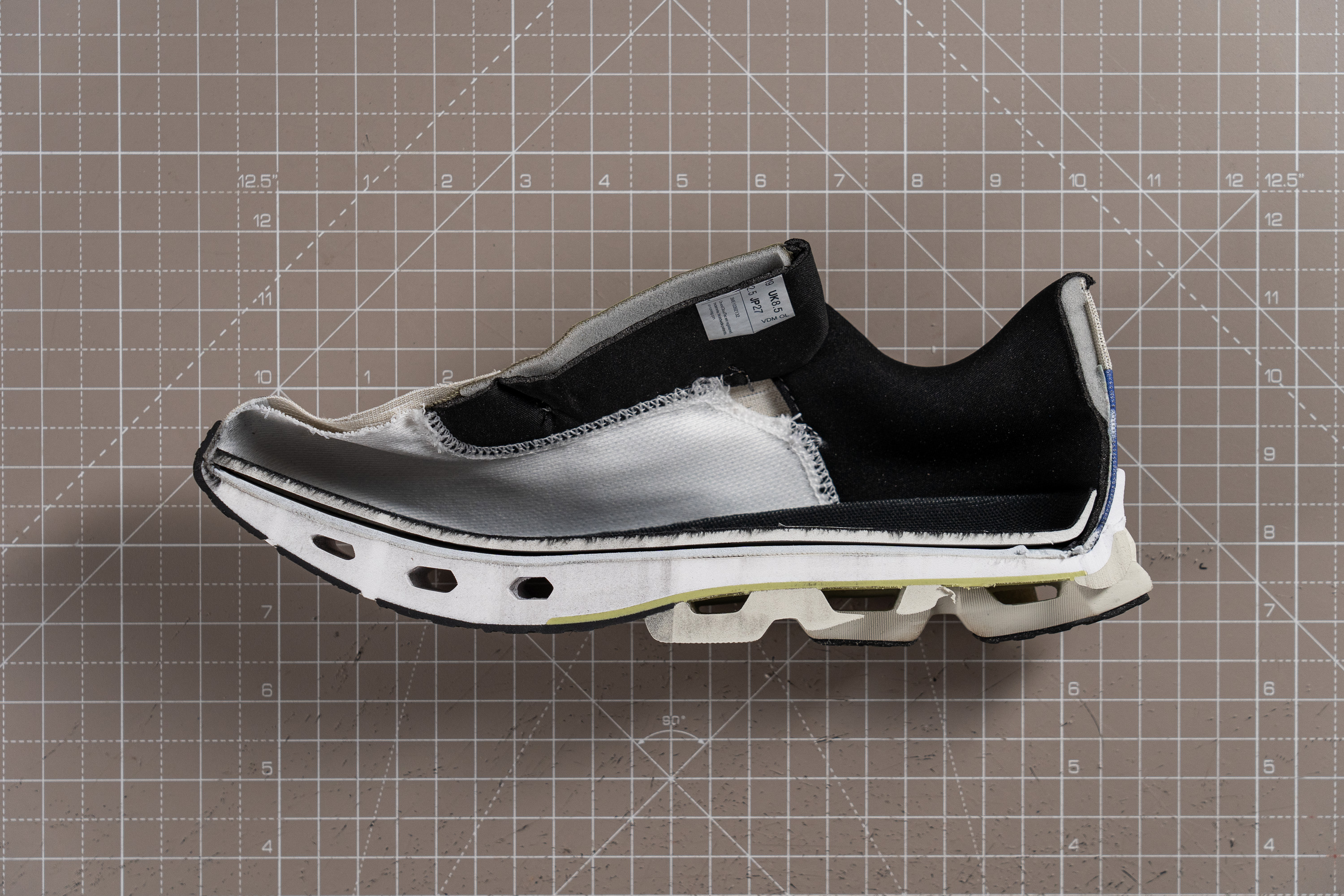
| Cloudspark | 8.6 mm |
| Average | 8.6 mm |
Midsole softness
We explored the midsole, which, like most On running shoes, incorporates CloudTec technology featuring multiple pods. These pods aim to lighten the shoe and enhance foam compression.
However, the necessity of these pods becomes apparent with the Cloudspark, as the foam registered a really firm 34.8 HA.
Although this might be a strategic choice to counter lateral collapse—as women often pronate more due to their hip and knee biomechanics—it seems excessively firm to us, and would benefit from getting below the 30-HA threshold.
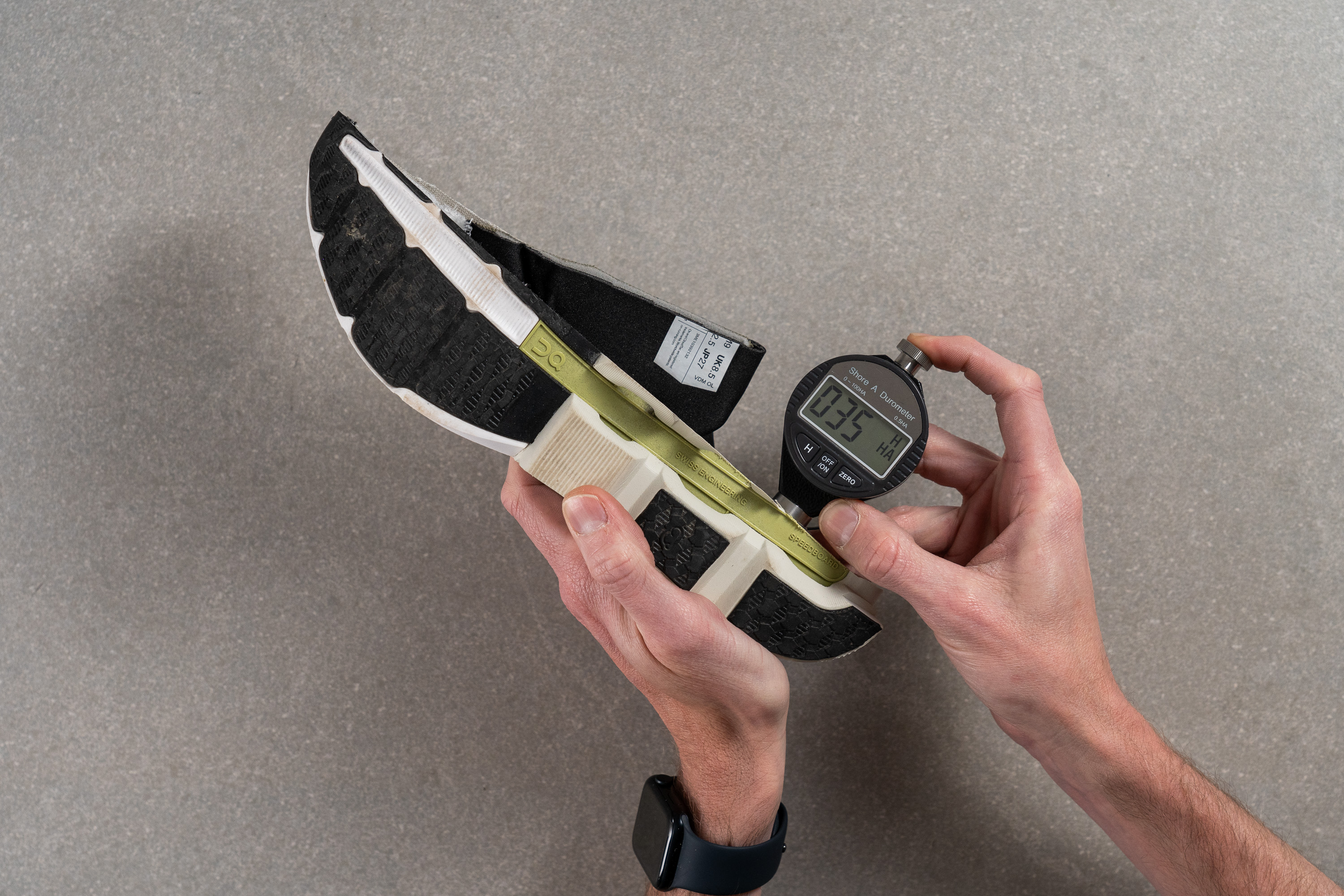
| Cloudspark | 34.8 HA |
| Average | 20.4 HA |
Secondary foam softness
The Cloudspark features a dual-foam configuration, with the secondary material being even firmer and denser than the primary at 38.9 HA. This level of firmness is extremely pronounced and will primarily appeal to those who prefer a very solid, steel-like feel underfoot.
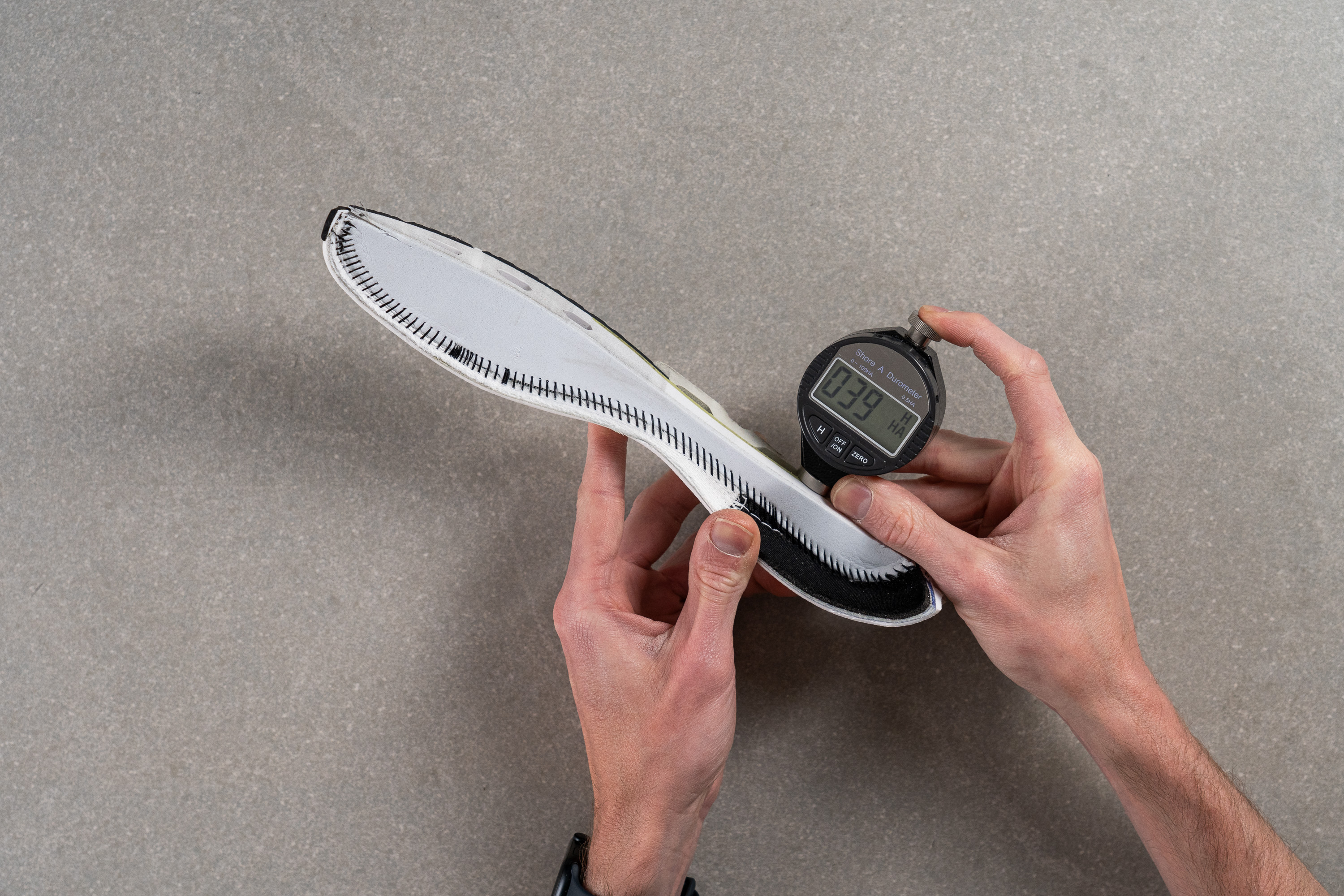
| Cloudspark | 38.9 HA |
| Average | 22.7 HA |
Plate
Like many On running shoes, the Cloudspark incorporates Speedboard technology, but this time we noticed that the Swiss brand has made two major adjustments—it's made from a nylon-blend material for improved flexibility and stops in the midfoot instead being a full-length plate. It also serves as a barrier between the primary and secondary foams.
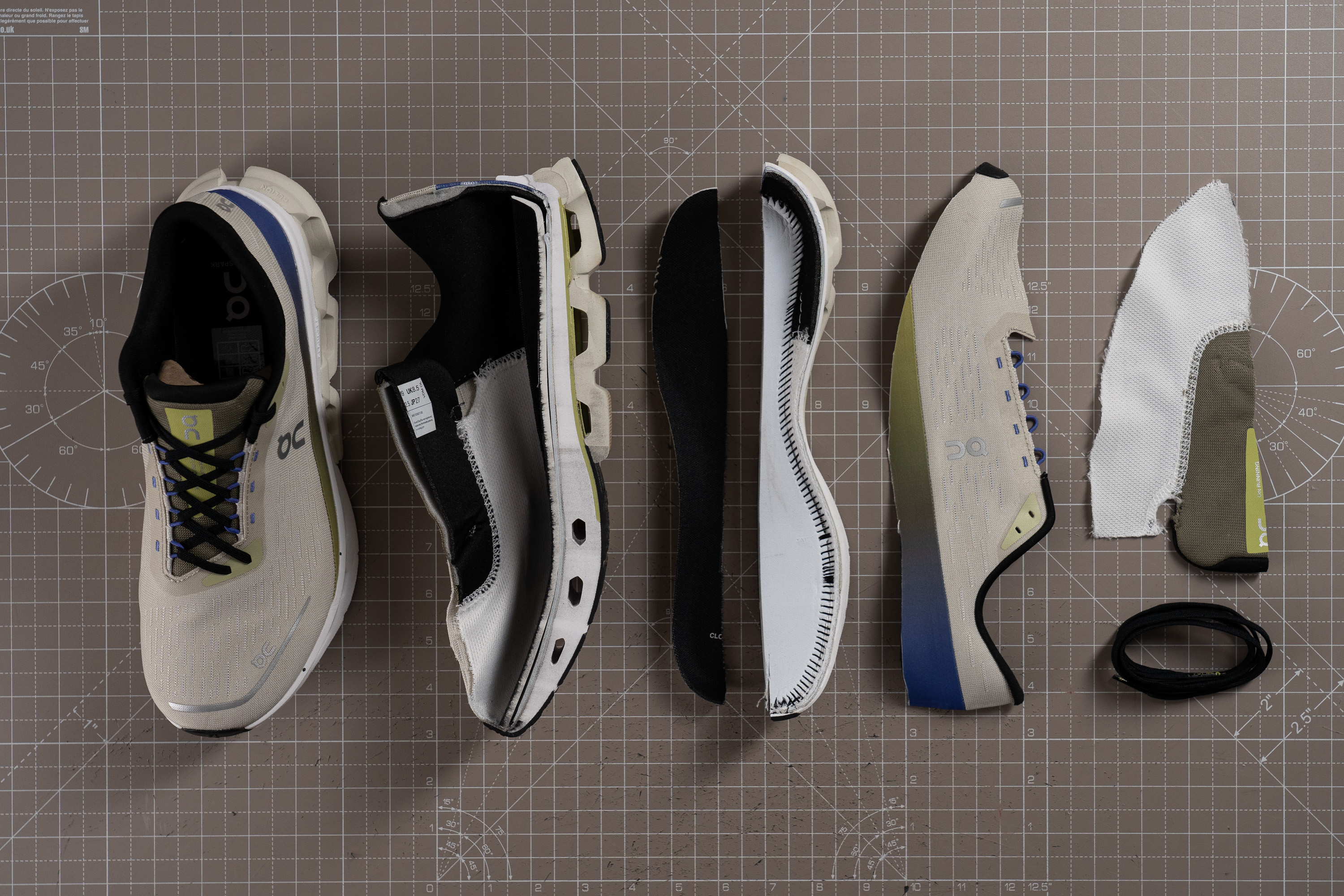
Size and fit
Size
On Cloudspark fits slightly small (35 votes).
Width / Fit
As we noted in our guide on running shoe uppers, women's feet differ from men's, primarily featuring a wider forefoot and a narrower heel.
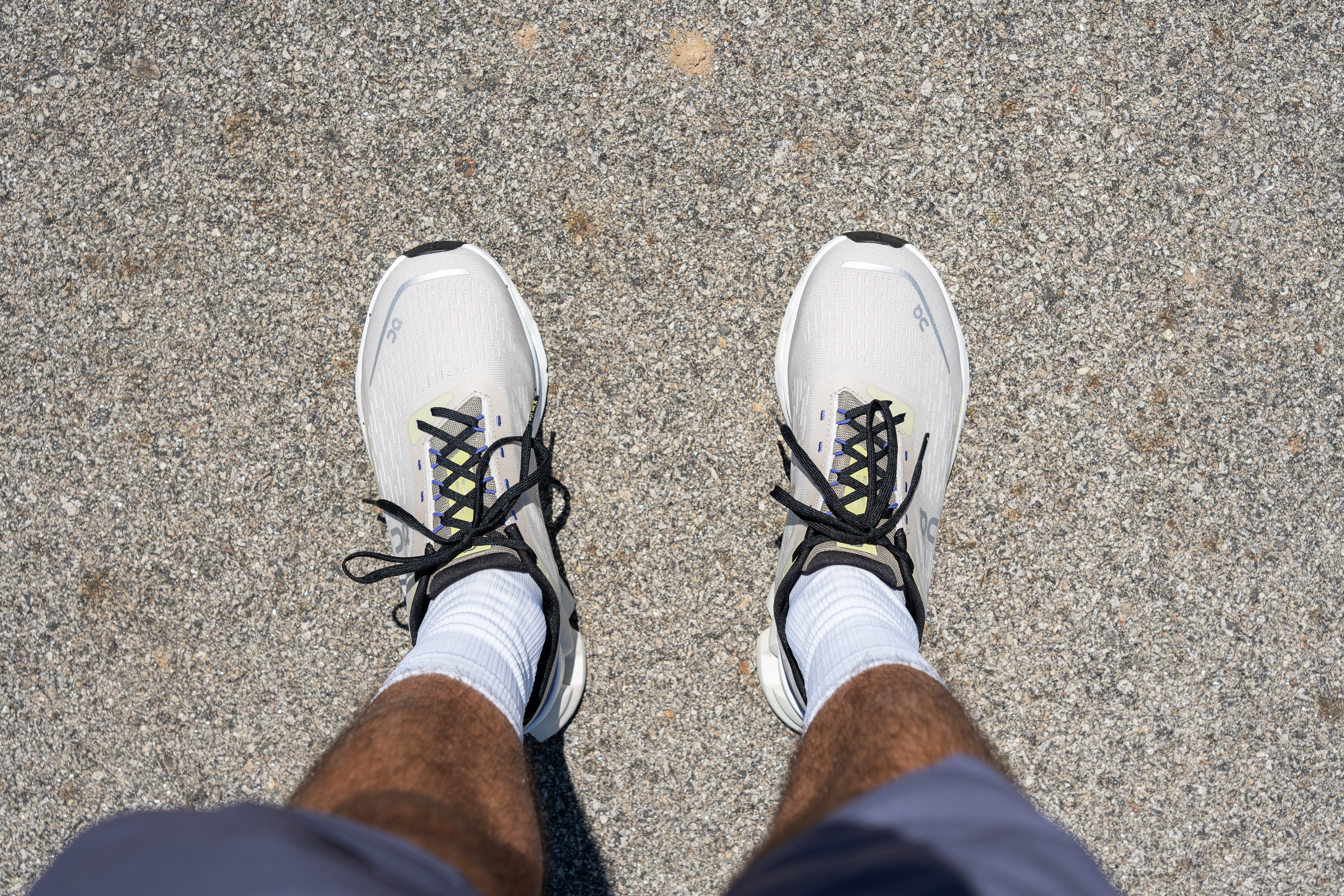
Given that this shoe was designed with women's feet in mind, we expected a broader-than-usual forefoot, and indeed, we measured it at 100.1 mm.
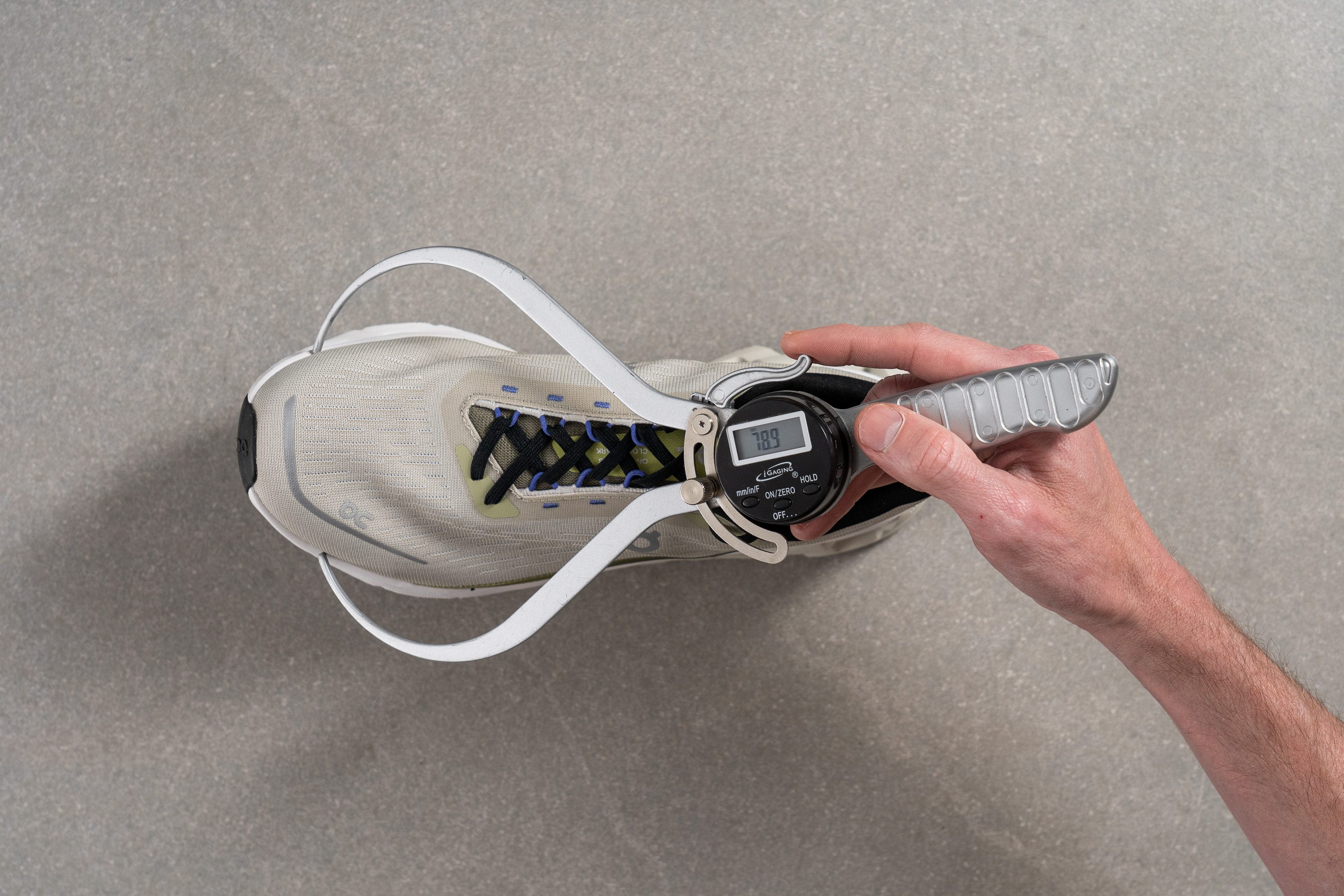
This test follows an older methodology, which is why you don't see recently tested shoes in the chart. Results from different methodologies can not be compared.
| Cloudspark | 100.1 mm |
| Average | 98.5 mm |
Toebox width
We also measured the big toe area with our callipers at 78.9 mm. This is a standard, no-risk design choice aimed at accommodating the majority of foot shapes of both genders.

This test follows an older methodology, which is why you don't see recently tested shoes in the chart. Results from different methodologies can not be compared.
| Cloudspark | 78.9 mm |
| Average | 78.4 mm |
Flexibility / Stiffness
Striving to balance stability with comfort, the Cloudspark has shown that optimal torsional stiffness is essential. But, what about longitudinal stiffness?
During our evaluation, it required 28.8N of force to flex the shoe to a 90-degree angle. This level of stiffness might be an overkill for those seeking an ultra-flexible shoe suitable for a variety of activities, including walking or cross-training.
This test follows an older methodology, which is why you don't see recently tested shoes in the chart. Results from different methodologies can not be compared.
| Cloudspark | 28.2N |
| Average | 28.1N |
Stiffness in cold (%)
After placing the Cloudspark in our freezer for another long 20 minutes to mimic cold conditions, we found that the shoe became 42% stiffer, which is not ideal.
| Cloudspark | 42% |
| Average | 33% |
Weight
Although the shoe carries some additional weight due to the thick rubber, it’s not overly cumbersome.
The rest of the shoe compensates well, allowing On to maintain a weight just below the 10-oz threshold at only 269g.
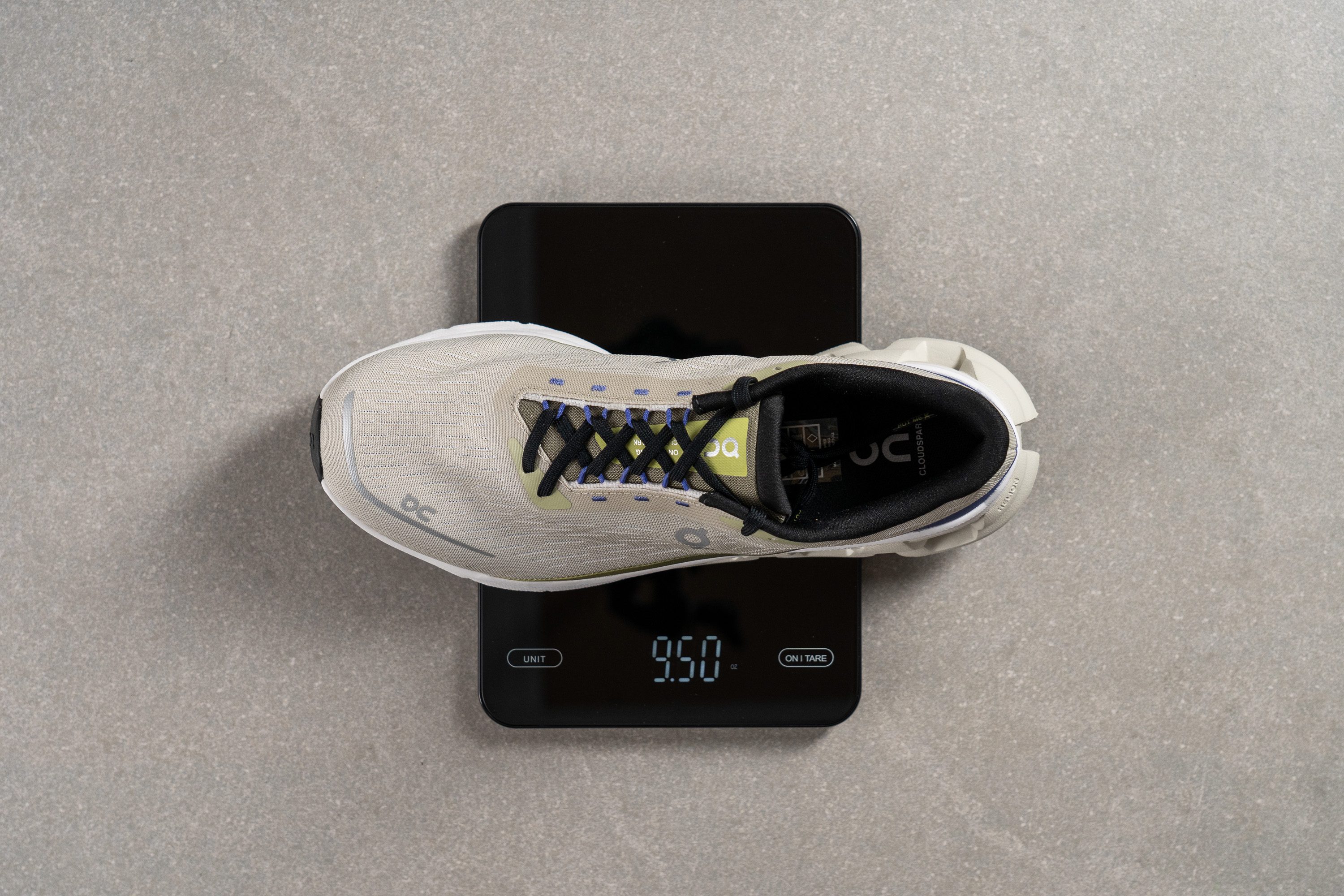
| Cloudspark | 9.5 oz (269g) |
| Average | 9.3 oz (264g) |
Breathability
During our smoke-pumping test, we observed that the upper offers decent ventilation, particularly through the medial sides—ideal for those prone to blisters in that region or along the arch. Yet, the toebox ventilation left us wanting more, leading us to rate it 3/5 overall.
Utilising a light, we discovered the cleverly-designed ventilation strips by On. These strips not only look outstanding but also boast a high quality that sets them apart from the average brand's simpler perforated designs.
We then used a microscope to examine these ventilation areas more closely.

We found that On strategically thinned the yarns in these areas while maintaining the overall structure of the upper, enhancing both comfort and durability.

In our final evaluation of the upper, we appreciate that On maintains its market position with premium pricing.
However, we found that the superior quality of the upper certainly justifies the cost, at least for now.
| Cloudspark | 3 |
| Average | 3.7 |
Stability
Lateral stability test
While we found the midsole a tad firm, this characteristic undoubtedly brings notable advantages. The most prominent among them is the remarkable stability we experienced in the Cloudspark, which is impressive for a shoe that isn't particularly wide.
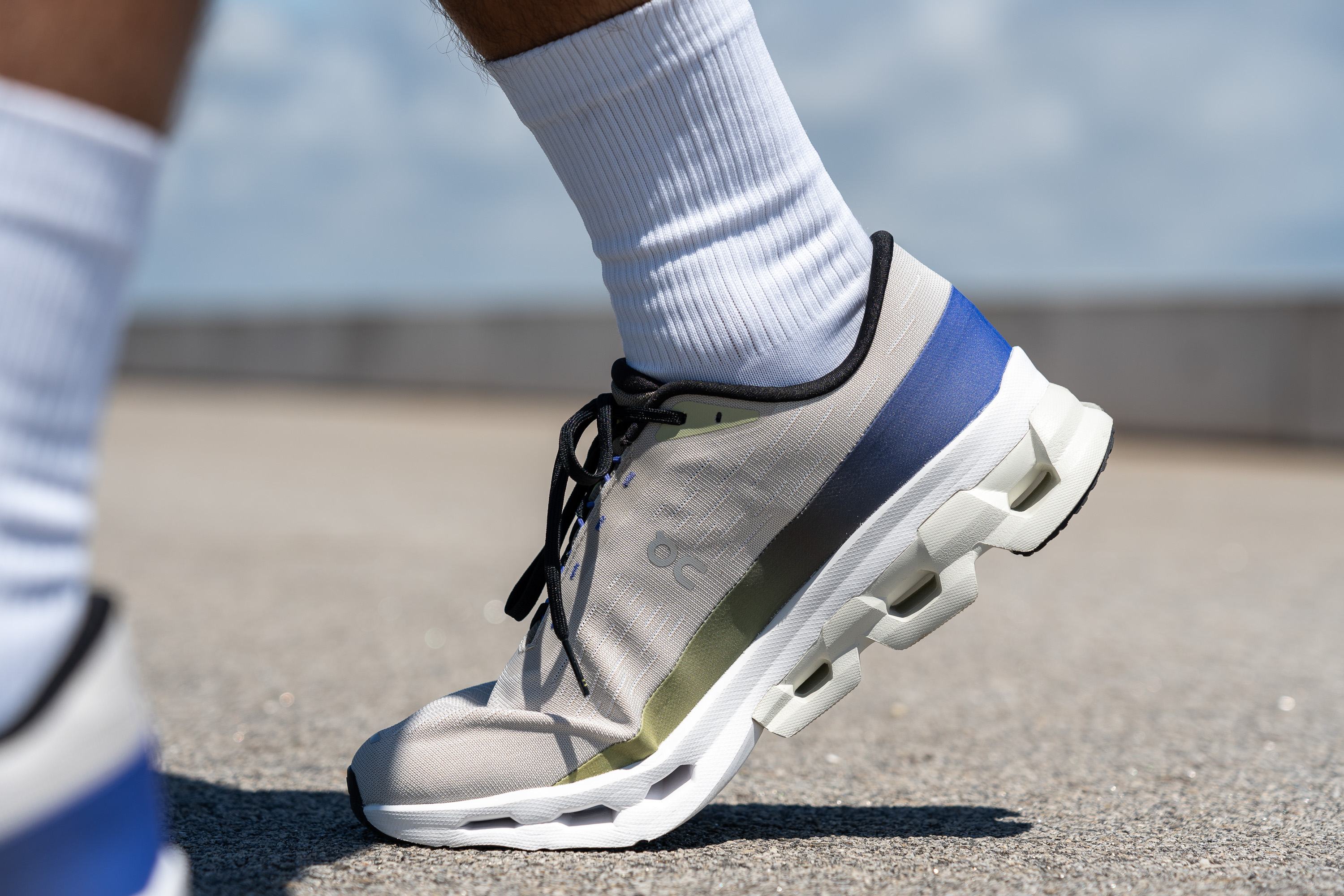
We also want to emphasise the substantial reinforcement that On has designed, wrapping from the heel to the forefoot, as it also contributes to keep to achieve more stable landings.
Torsional rigidity
We rated the torsional rigidity of the Cloudspark at 4 out of 5, which significantly contributes to delivering a stable ride. However, this rigidity slightly reduces comfort, particularly at very slow paces.
| Cloudspark | 4 |
| Average | 3.5 |
Heel counter stiffness
We anticipated a rigid heel counter, but instead, we discovered a more flexible design focused on comfort (2/5). While this flexibility might slightly compromise stability, the combination of firm foam and high torsial stiffness likely enabled On to adopt this softer approach.
In our view, this rare combination makes it ideal for those with Achilles tendon issues who want stability without a firm heel counter.
| Cloudspark | 2 |
| Average | 2.9 |
Midsole width - forefoot
When we began discussing stability in this lab review, we noted that the shoe wasn't particularly wide—certainly not as wide as many stability shoes typically are. This narrower fit is also a hallmark of On's design strategy.
After measuring the forefoot, we found a width of 114.6 mm, aligning it closely with the dimensions typical of most neutral running shoes.
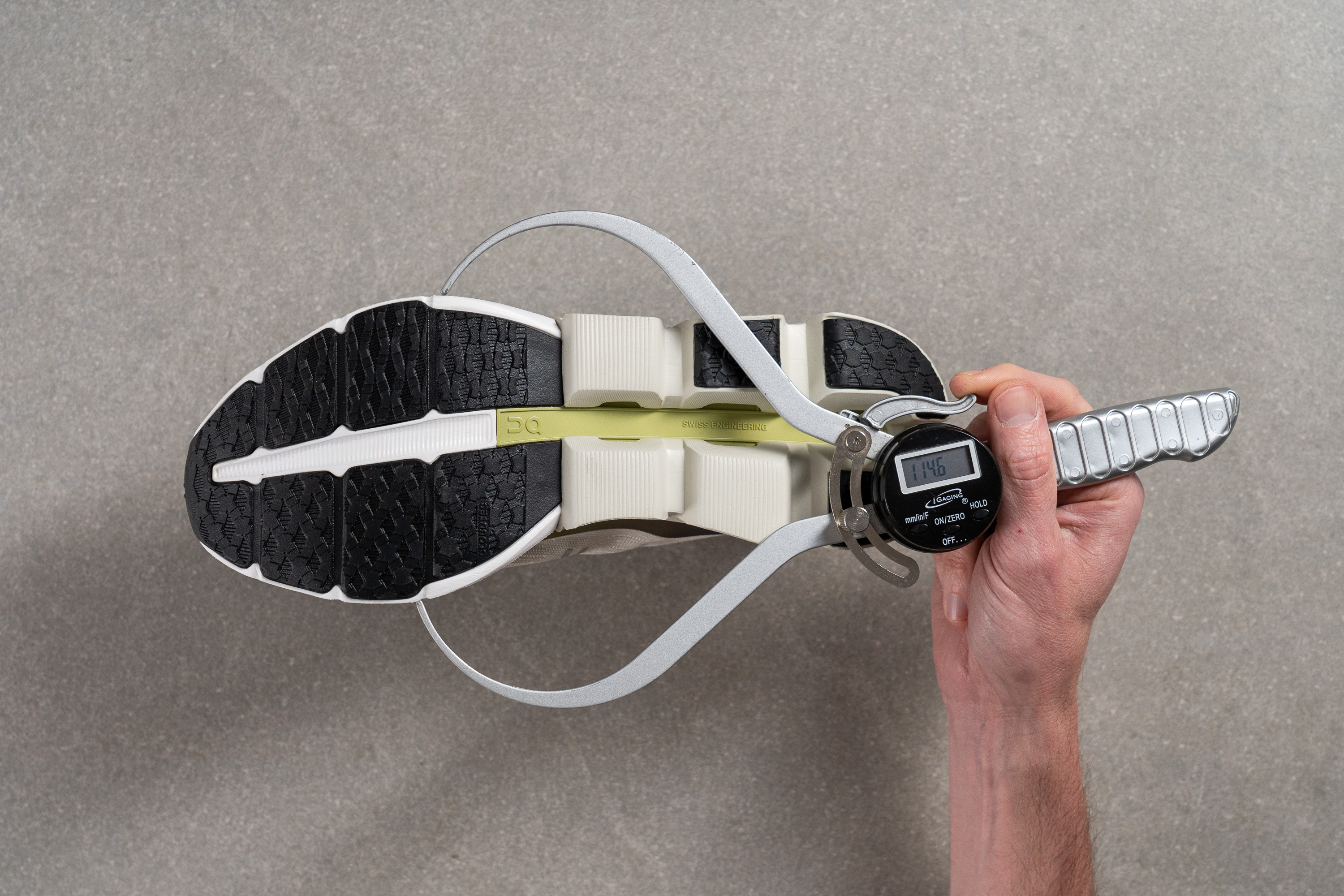
| Cloudspark | 114.6 mm |
| Average | 114.4 mm |
Midsole width - heel
Shifting our digital callipers to the forefoot confirmed the trend, as a measurement of 91.5 mm is another typical dimension for this type of shoe.
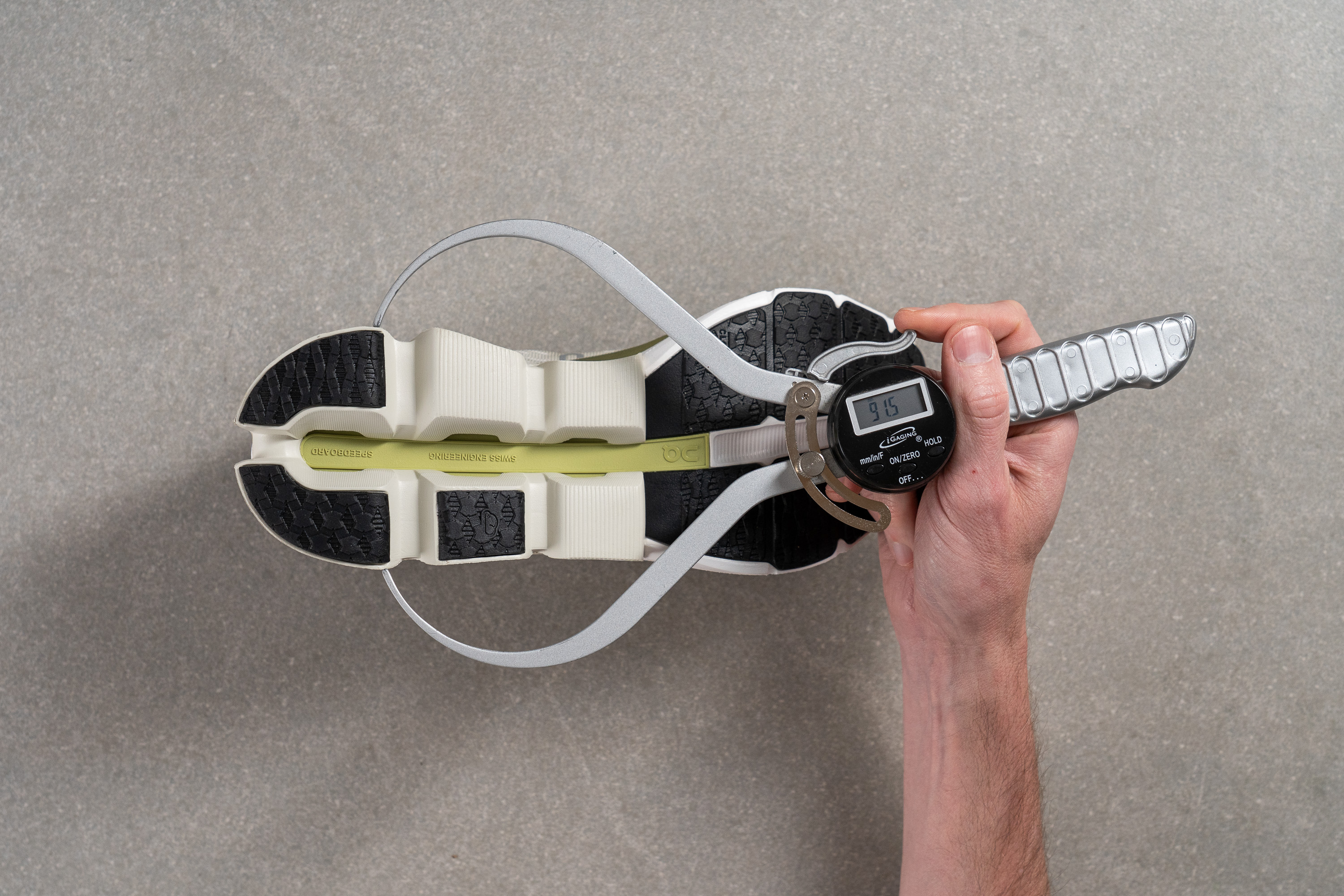
| Cloudspark | 91.5 mm |
| Average | 90.7 mm |
Durability
Toebox durability
Our initial test with the Dremel always targets the toebox, a common area of concern where runners often experience wear from their toenails.
The Cloudspark earned a 3/5 in this evaluation thanks to its dual-layer upper—not a poor score, yet somewhat underwhelming for a shoe marketed as premium, where we expected a bit more durability.
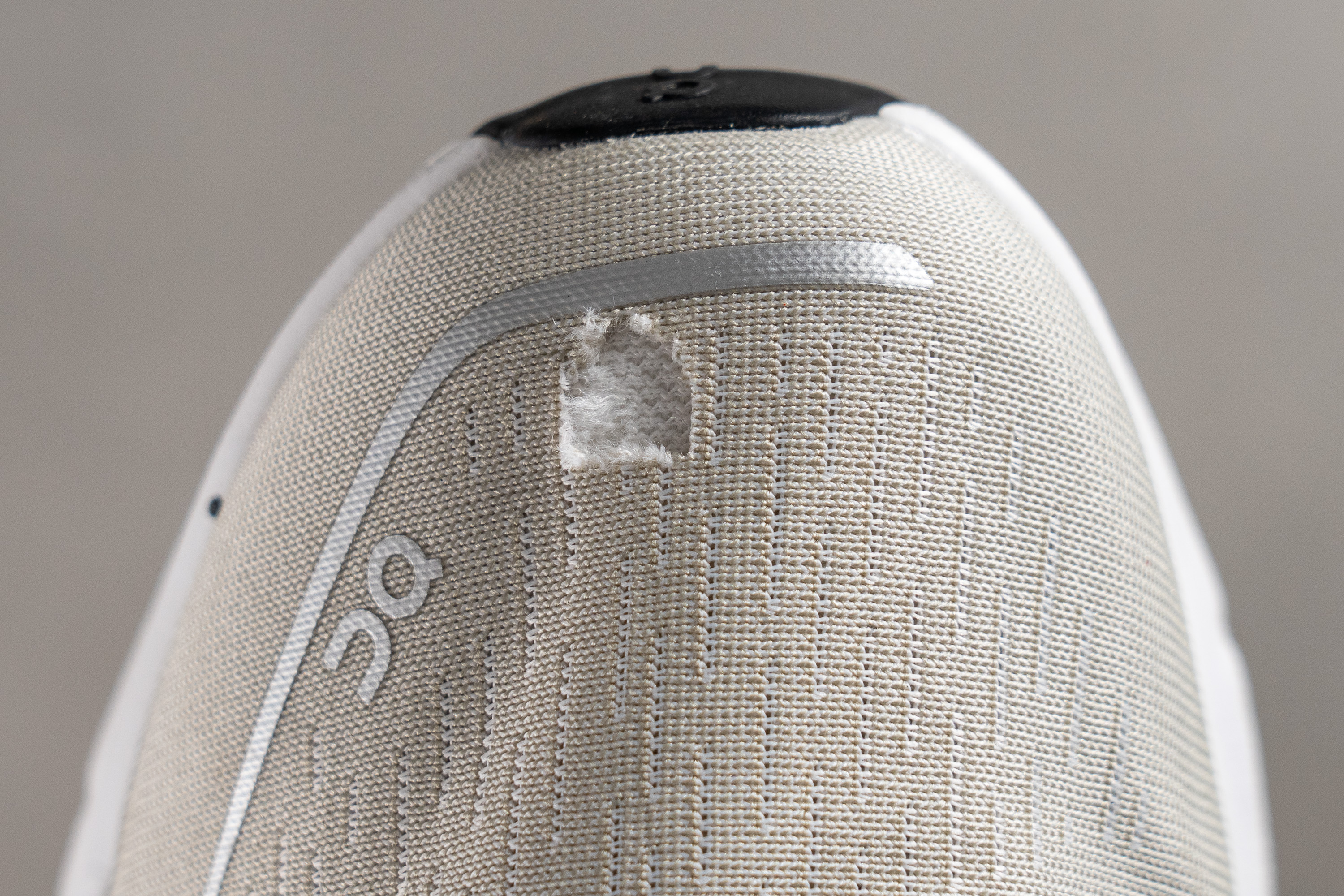
| Cloudspark | 3 |
| Average | 2.6 |
Heel padding durability
The heel padding of the Cloudspark disappointingly falls short in durability.
In our rigorous testing—our second standardised Dremel test where we apply consistent force and time to this area—the shoe earned a dismal 1/5 score, placing it firmly at the bottom of our rankings.
| Cloudspark | 1 |
| Average | 3.4 |
Outsole hardness
Turning our focus to the outsole, we discovered that the Swiss brand adopts a cautious strategy. Our measurements showed a hardness of 88.9 HC, indicating a formulation that tends towards the harder side, potentially sacrificing some grip.

Thes outsole is quite interesting. It combines rubberized foam with substantial amounts of hard rubber and features a prominent, central groove that shows the Speedboard plate, boosting flexibility.

| Cloudspark | 88.9 HC |
| Average | 79.2 HC |
Outsole durability
We used the Dremel for a third—and final—time to test the toughness of the rubber.
Unfortunately, the results were slightly underwhelming once more regarding durability. While a wear of 1.1 mm isn't disastrous, we expected much better performance from an 88.9-HC rubber.
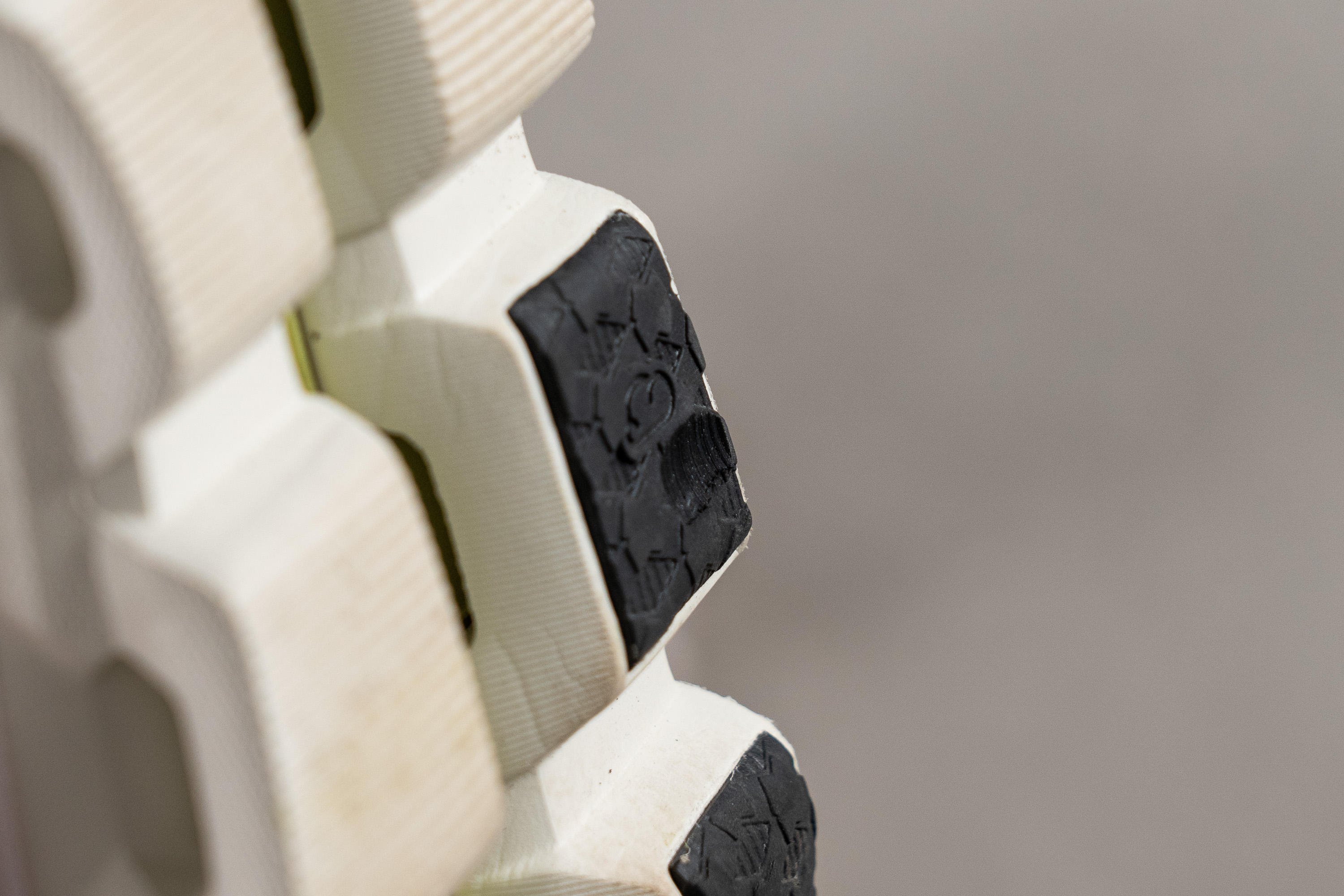
| Cloudspark | 1.1 mm |
| Average | 1.1 mm |
Outsole thickness
On seems aware of the type of rubber they were using, as they installed a thick 3.9-mm layer beneath the midsole.
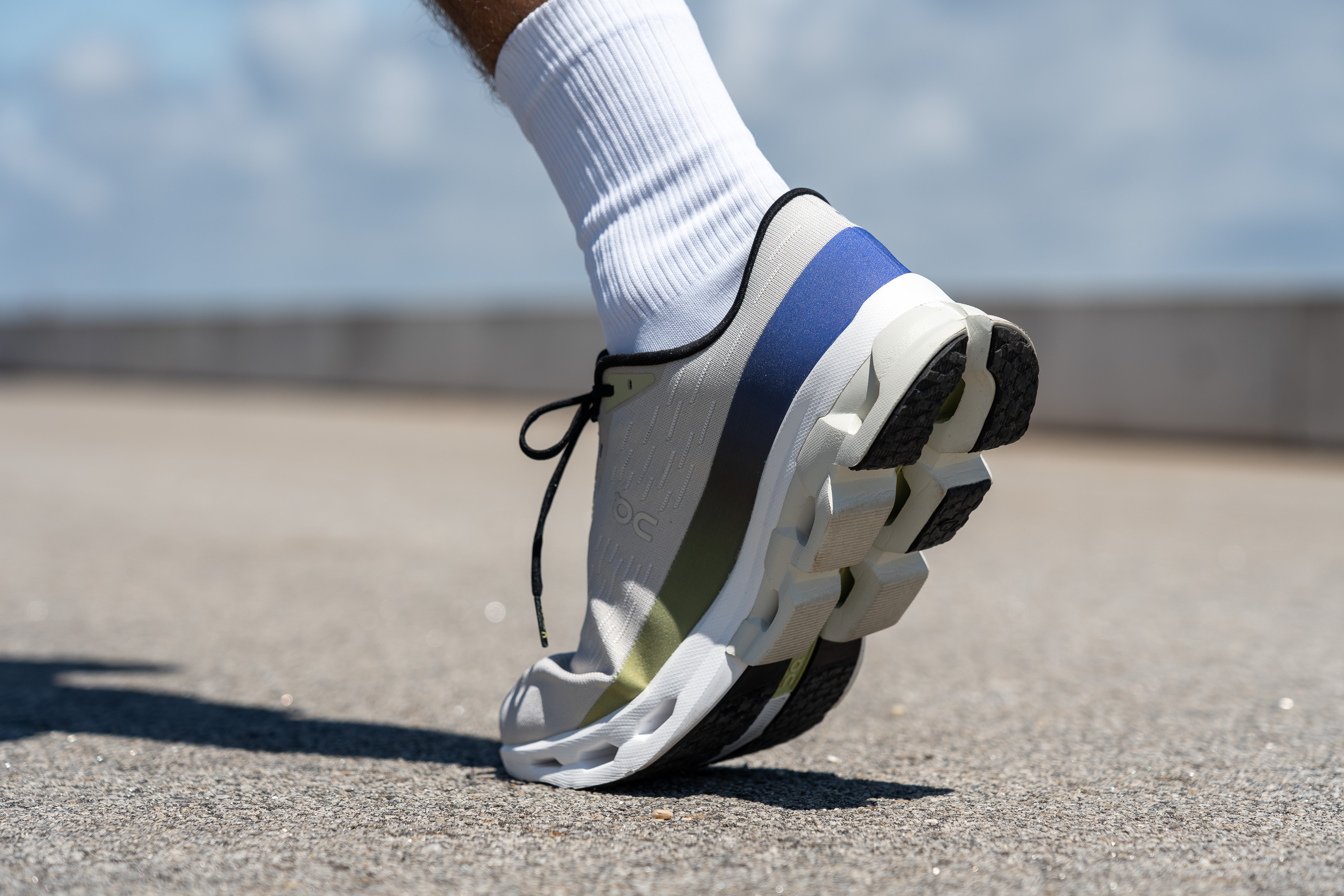
Although this solution isn't perfect—it does add some weight—it compensates for the slightly lower durability we previously noted.
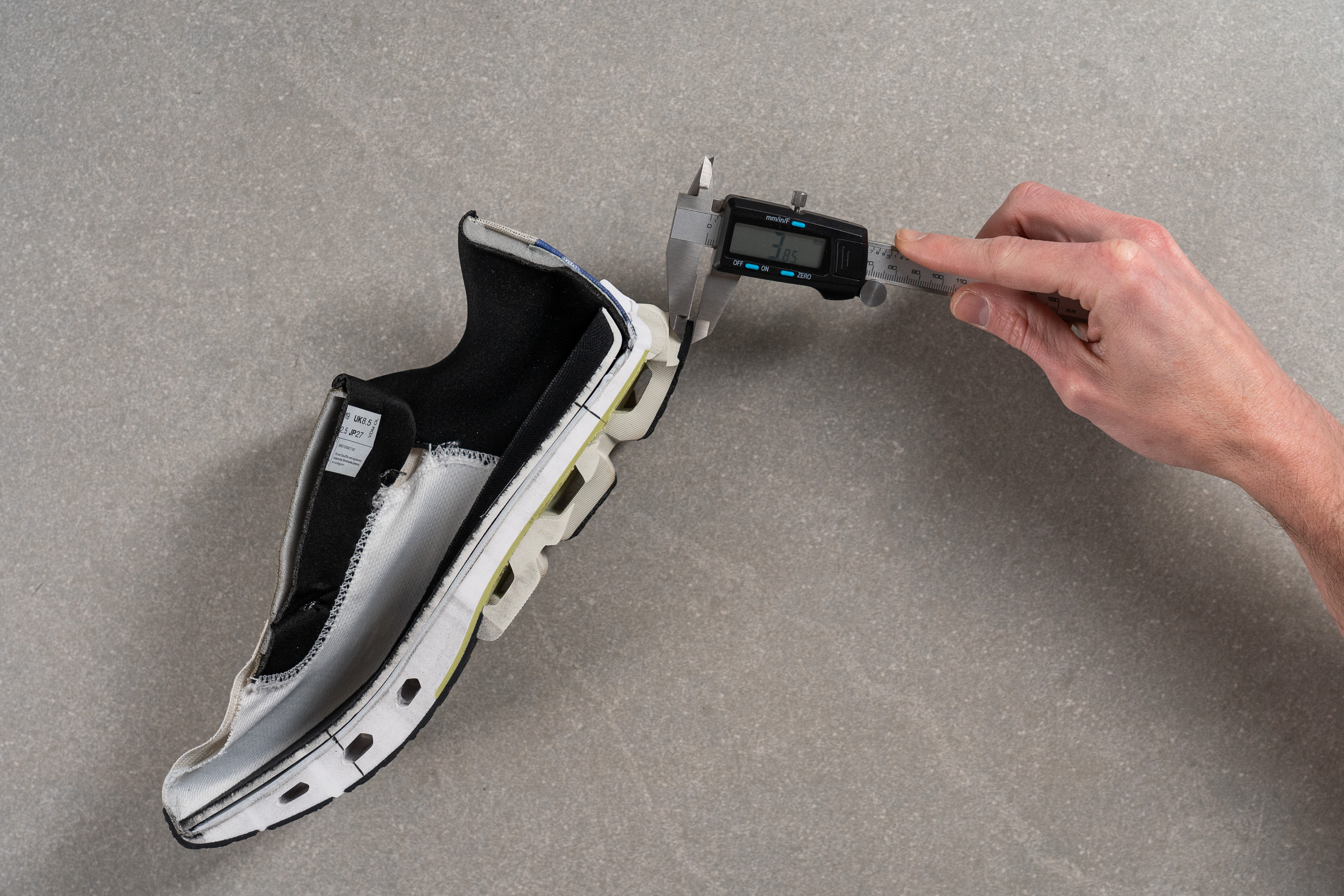
| Cloudspark | 3.9 mm |
| Average | 3.2 mm |
Misc
Insole thickness
Inside the shoe, we uncovered an insole that proved lightweight and comfortable, measuring 4.0 mm in thickness.
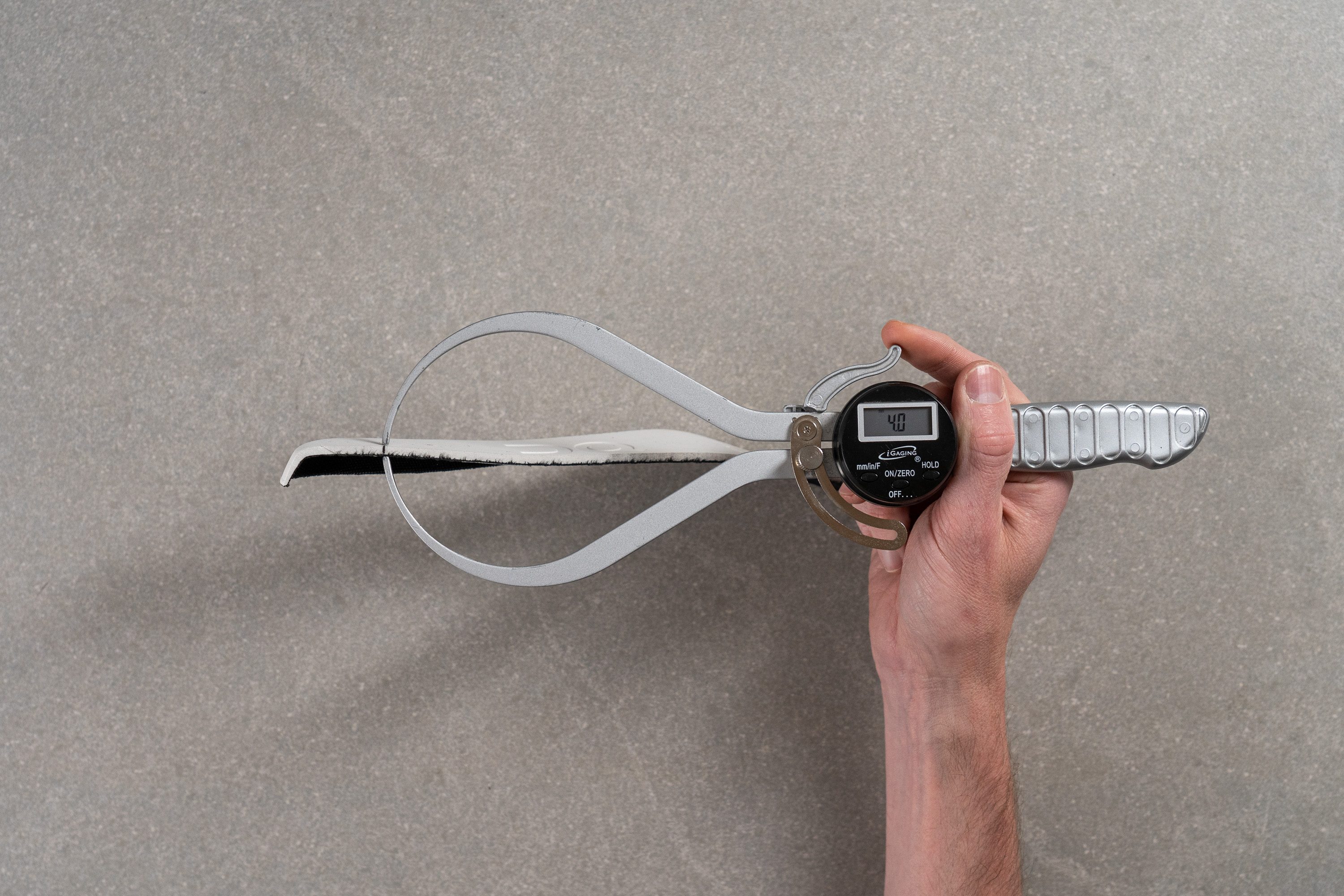
| Cloudspark | 4.0 mm |
| Average | 4.5 mm |
Removable insole
A nice bonus of the Cloudspark is the removable insole—this choice simplifies the process of integrating your own aftermarket orthotic inserts if needed.
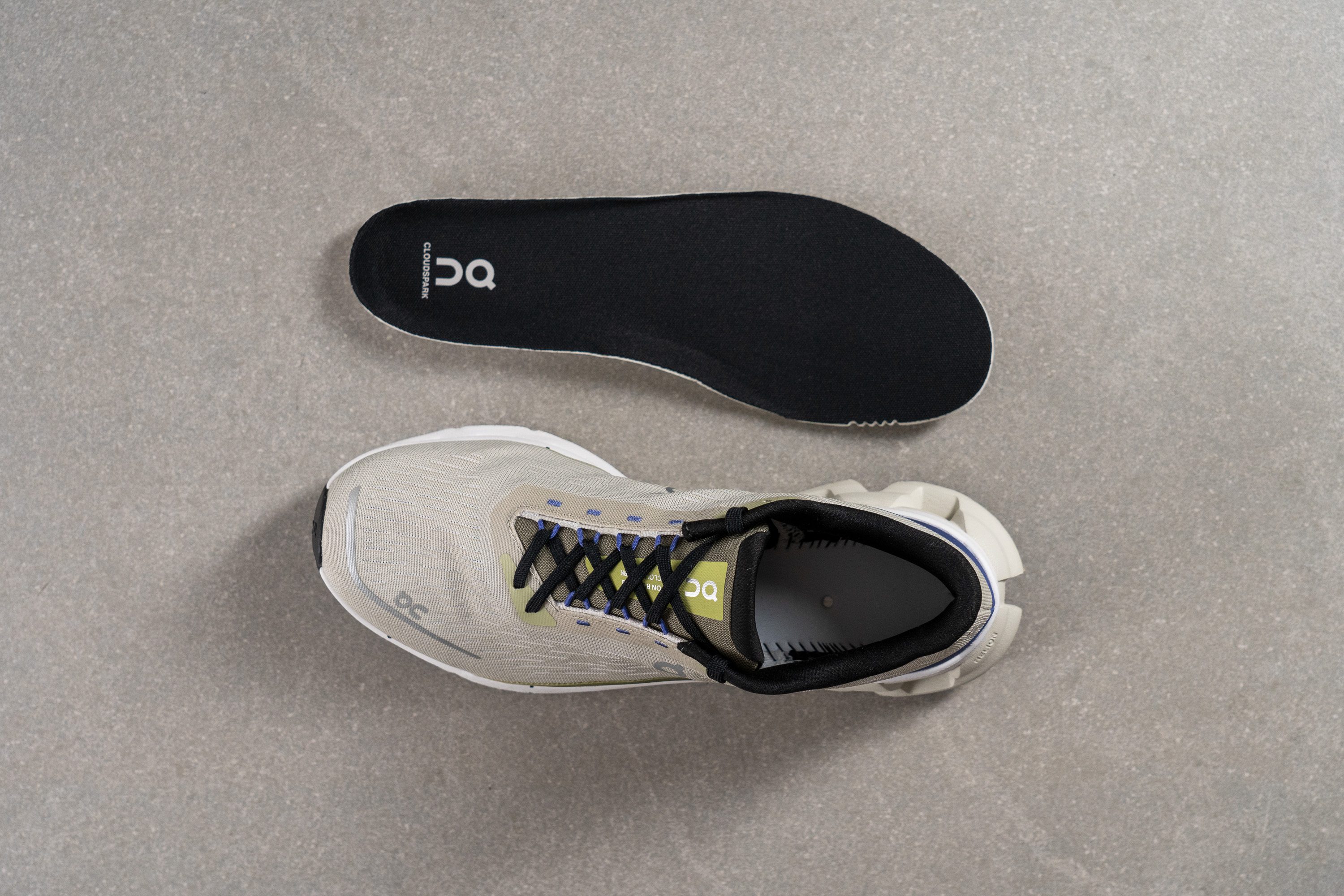
| Cloudspark | Yes |
Midsole softness in cold
On is one of the brands with an exceptionally high percentage of shoes featuring reflective elements (usually the brand's logo) in their lineup, and we were excited to discover them again in the Cloudspark.
| Cloudspark | 40.1 HA |
| Average | 25.1 HA |
Midsole softness in cold (%)
In colder temperatures, the midsole only became slightly firmer. We found a modest 15.5% increase from the room temperature reading, which is indeed a superb performance.

| Cloudspark | 16% |
| Average | 24% |
Reflective elements
On is one of the brands with an exceptionally high percentage of shoes featuring reflective elements (usually the brand's logo) in their lineup, and we were excited to discover them again in the Cloudspark.
| Cloudspark | Yes |
Tongue padding
We've discovered that many On road shoes—like the Cloudmonster Hyper—feature notably thin tongues, which we found less comfortable on the instep during long runs.

Fortunately, this time we encountered a thicker tongue, measuring 4.9 mm, offering a significantly improved experience for our instep!
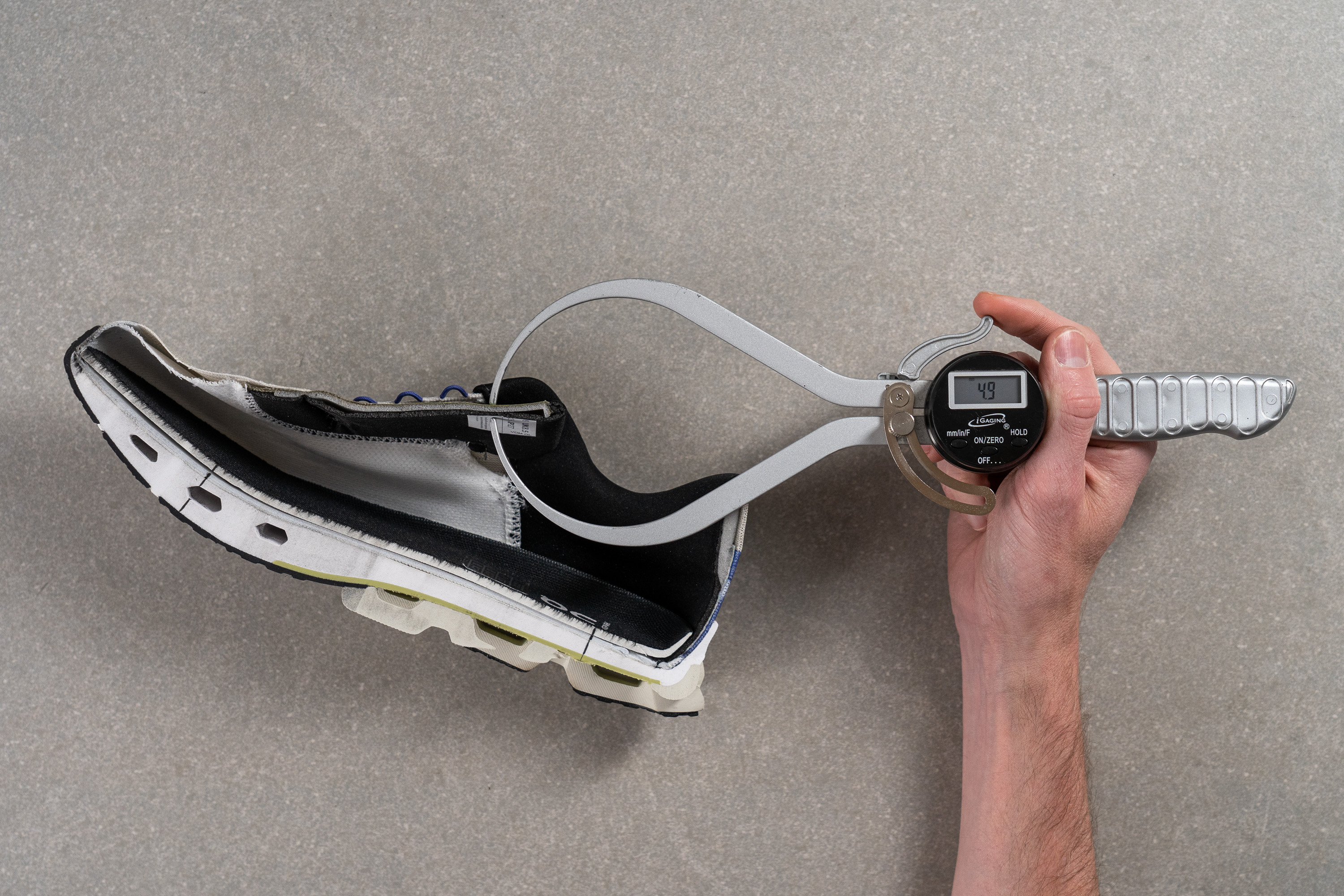
| Cloudspark | 4.9 mm |
| Average | 5.8 mm |
Tongue: gusset type
A key feature we need to find in a premium daily trainer is the gusseted—attached to the sides—tongue, and we found that the Cloudspark ticks the box.
| Cloudspark | Both sides (full) |
Heel tab
Like many other models from On, the Cloudspark also features the noticeable absence of a heel tab—a common trait among their streamlined, uncomplicated design.
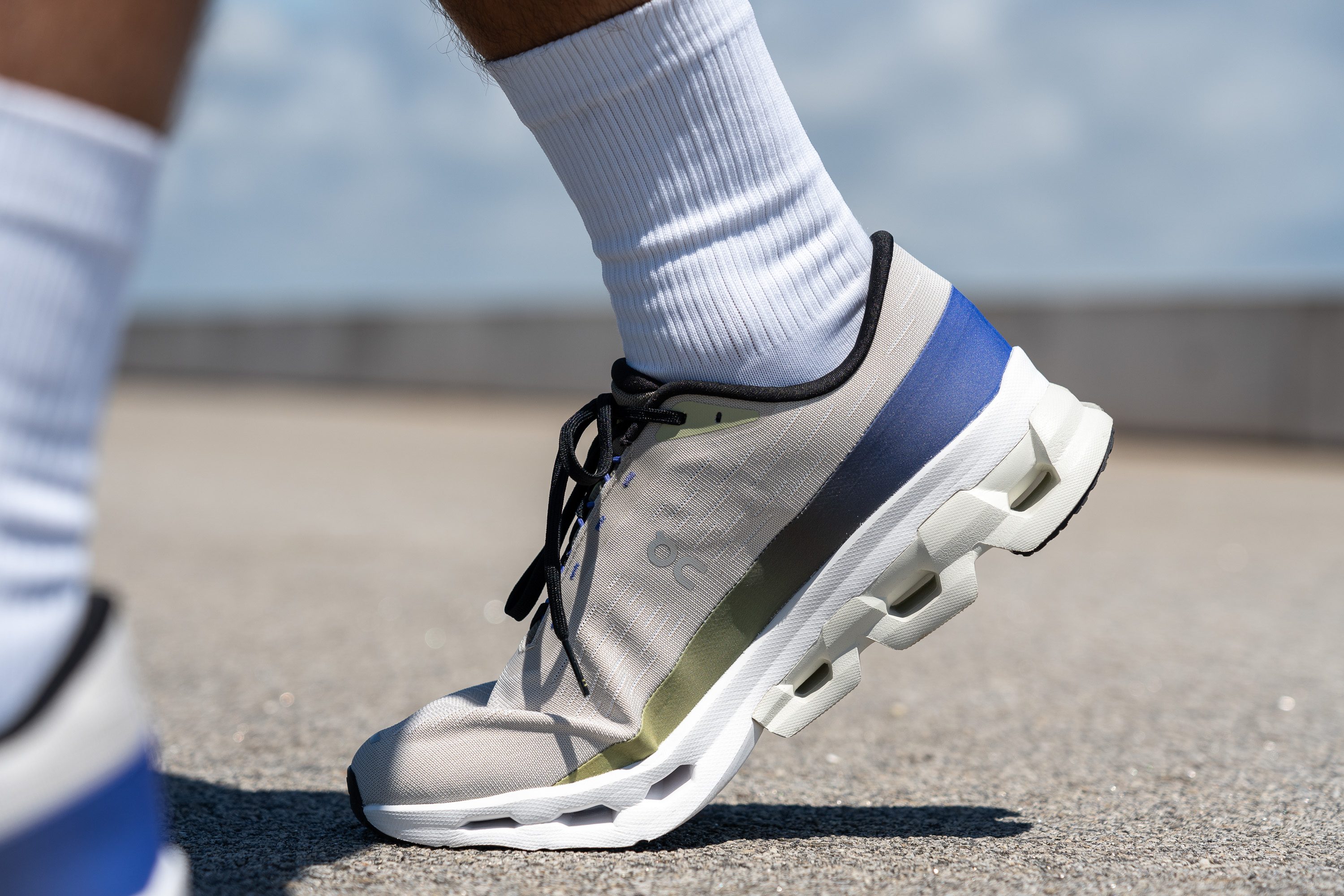
| Cloudspark | None |

